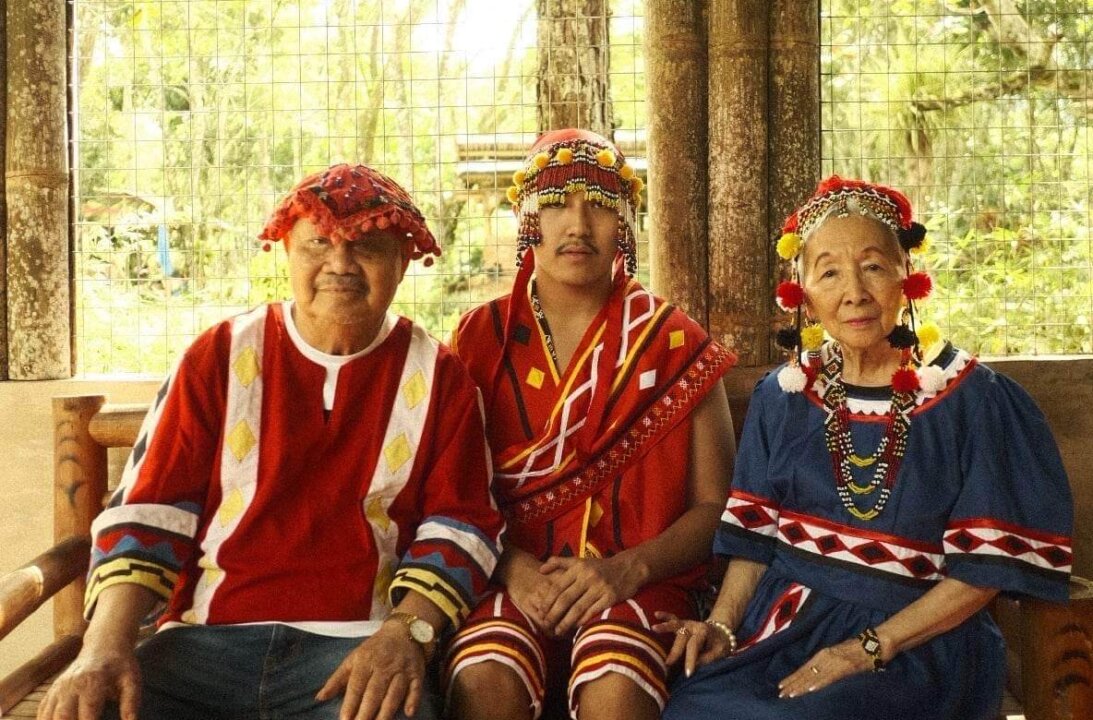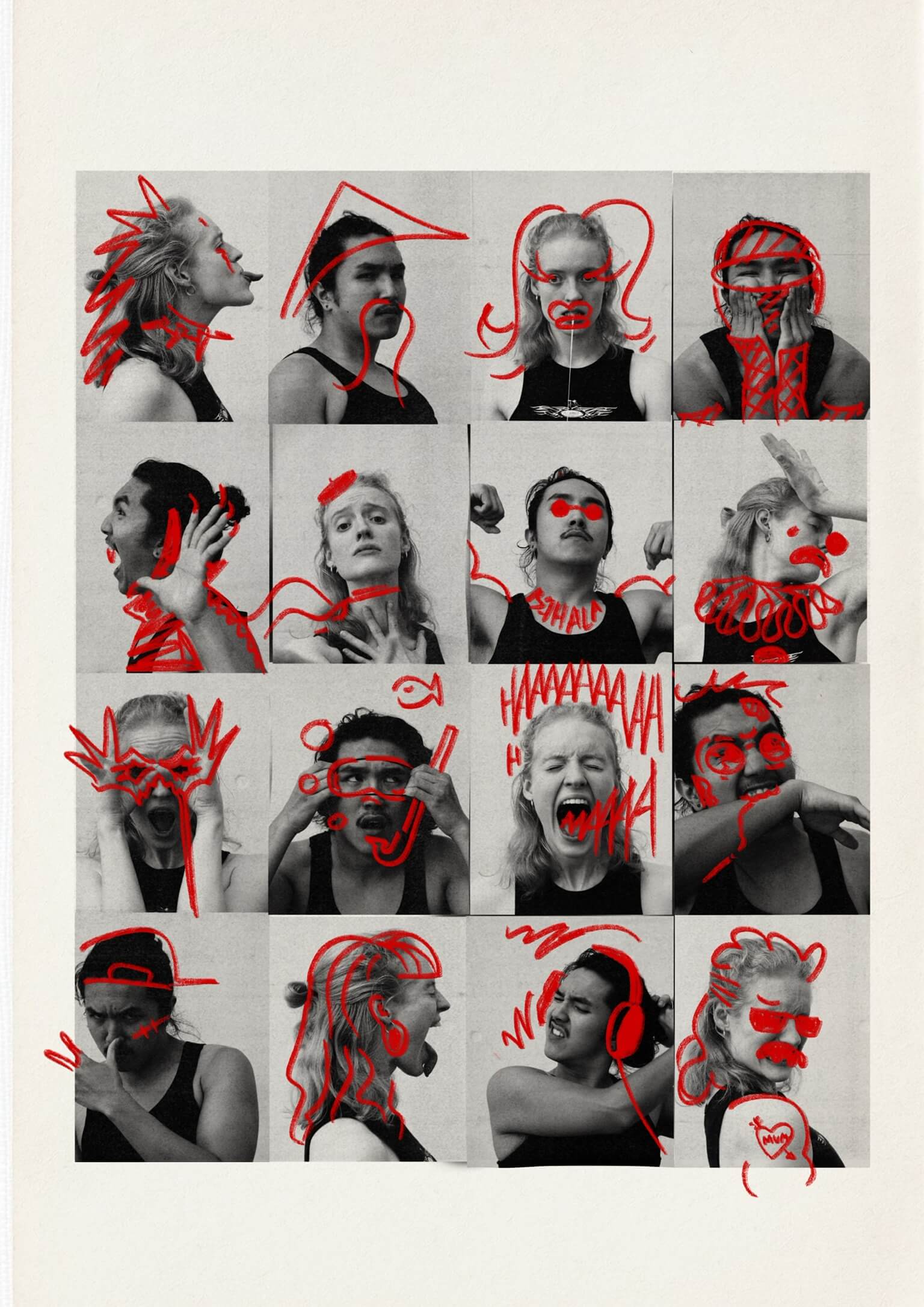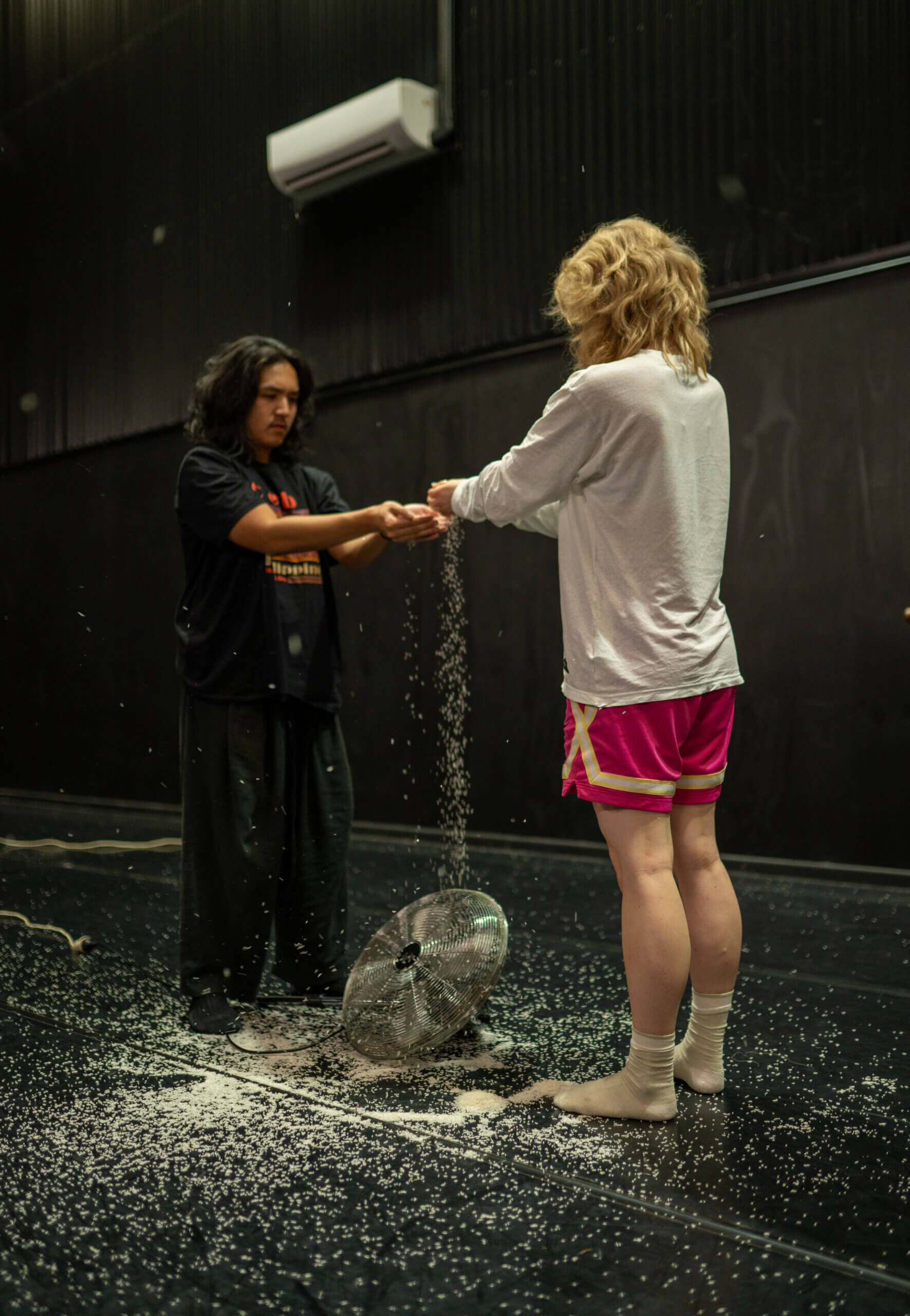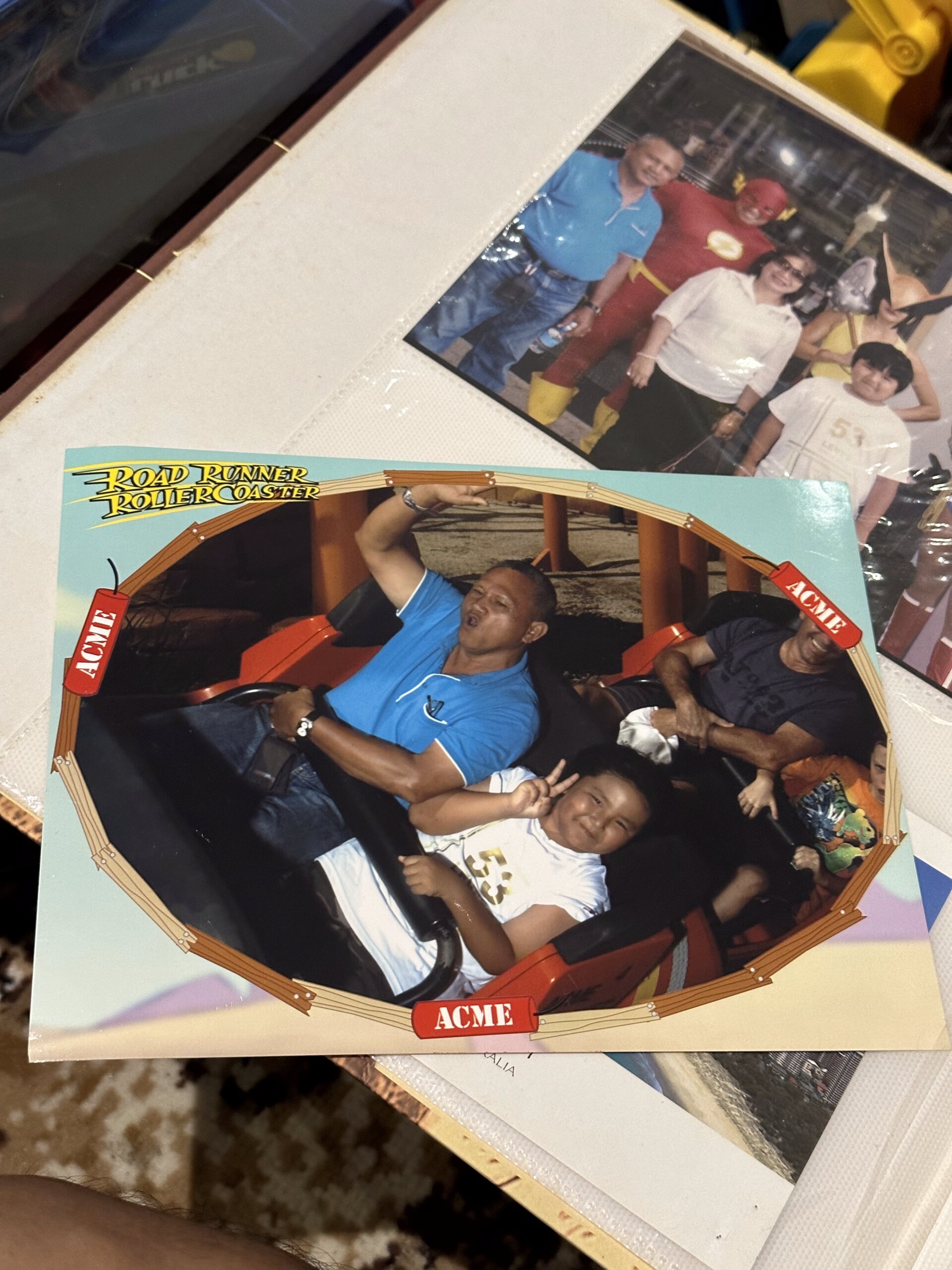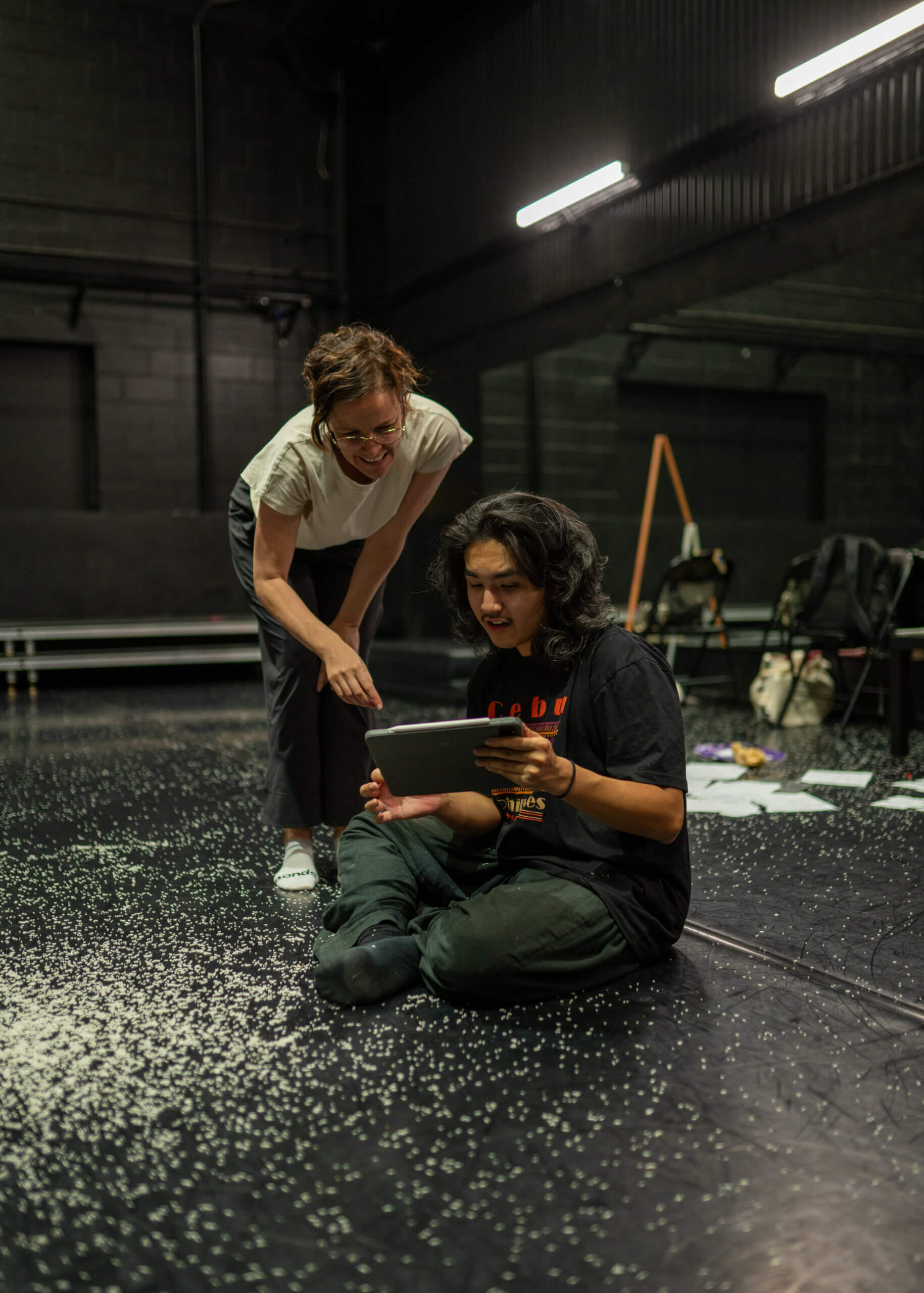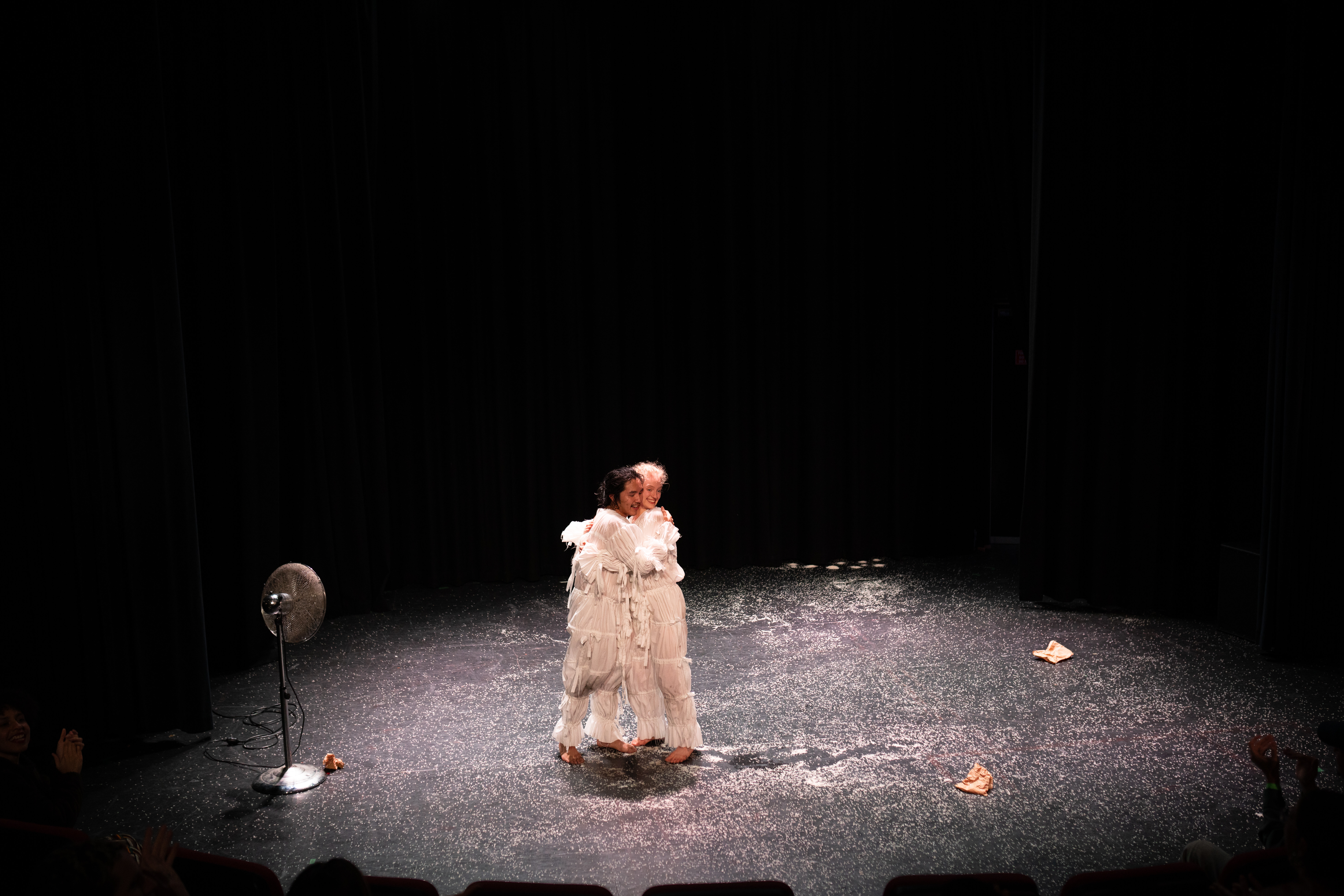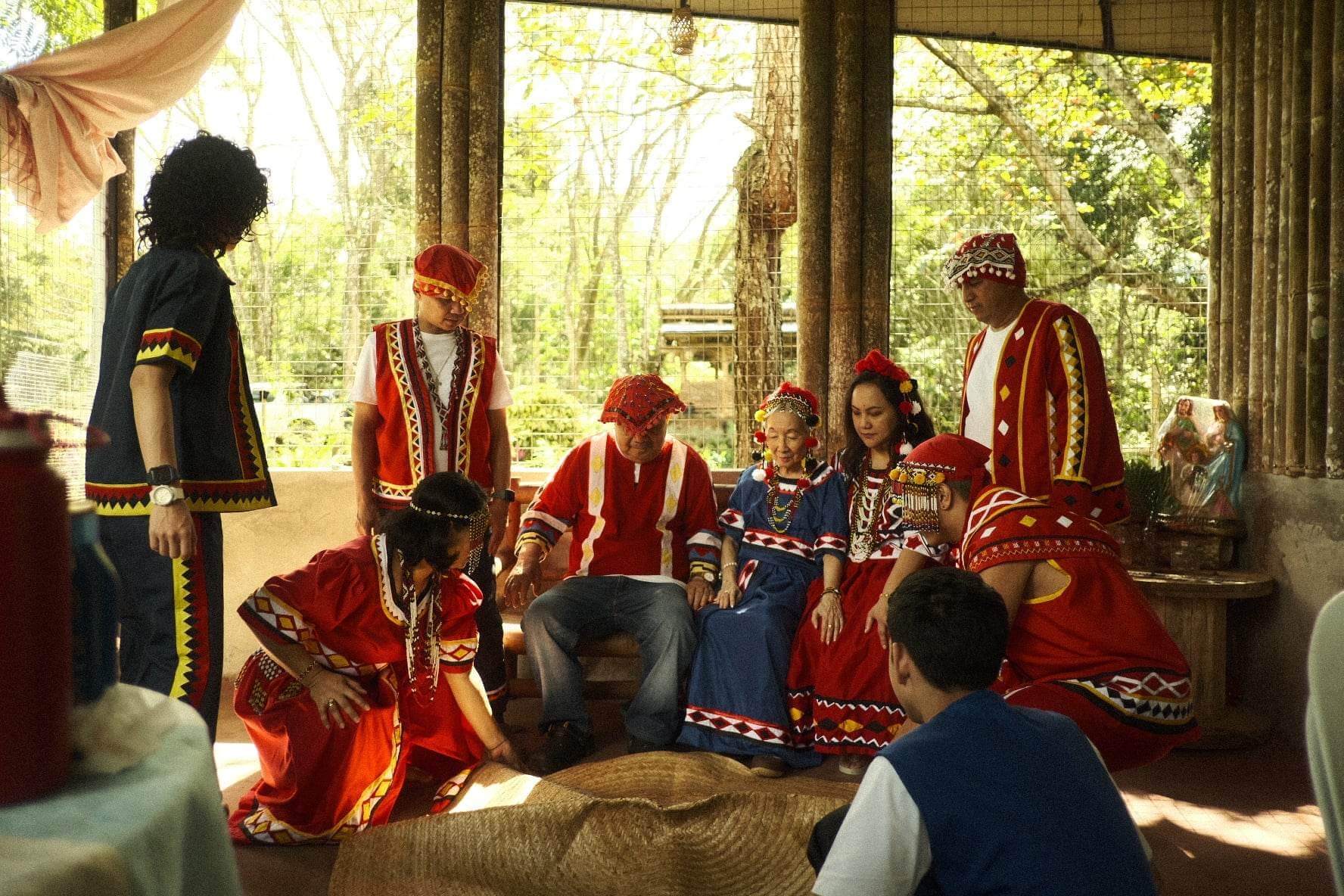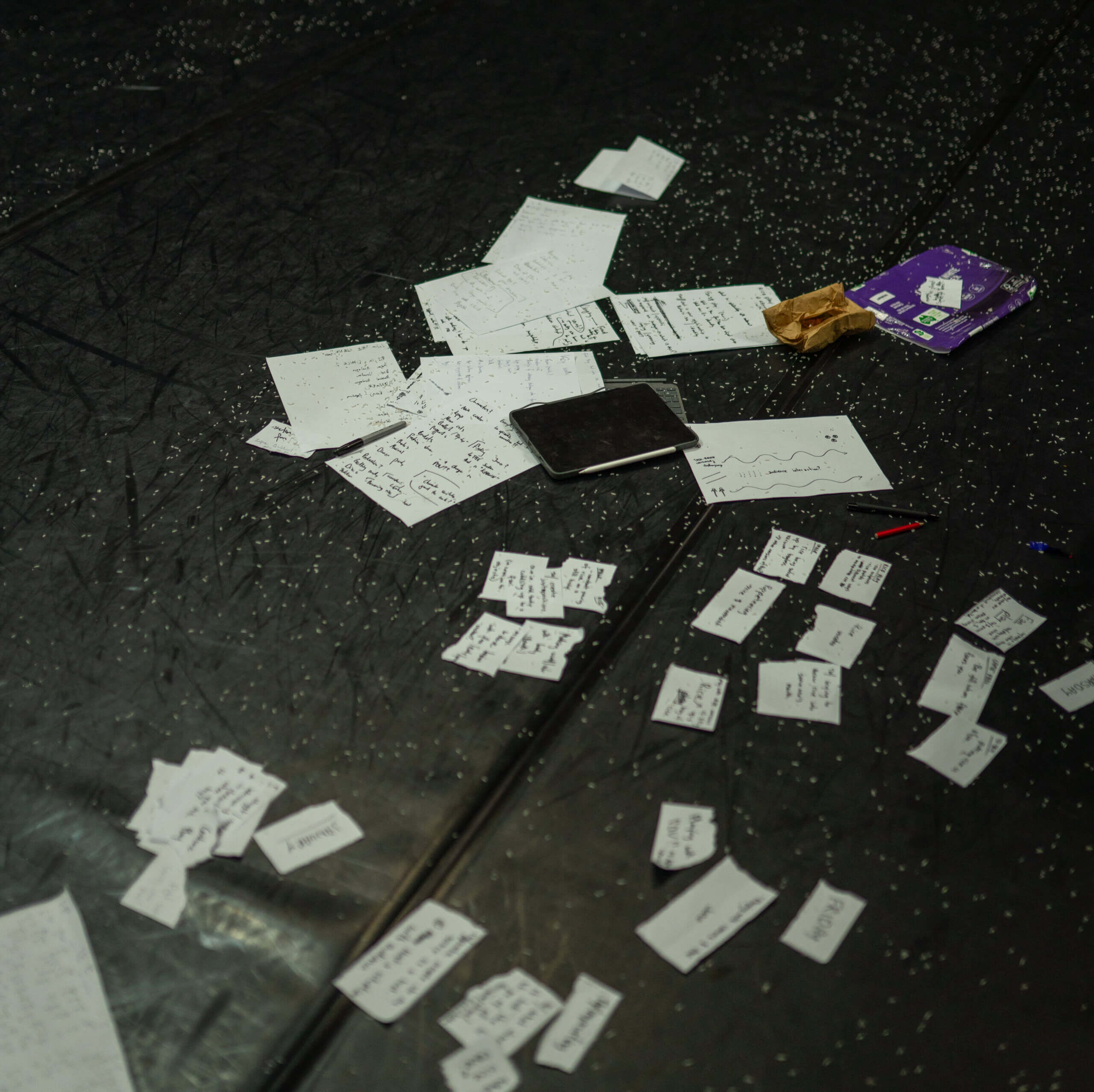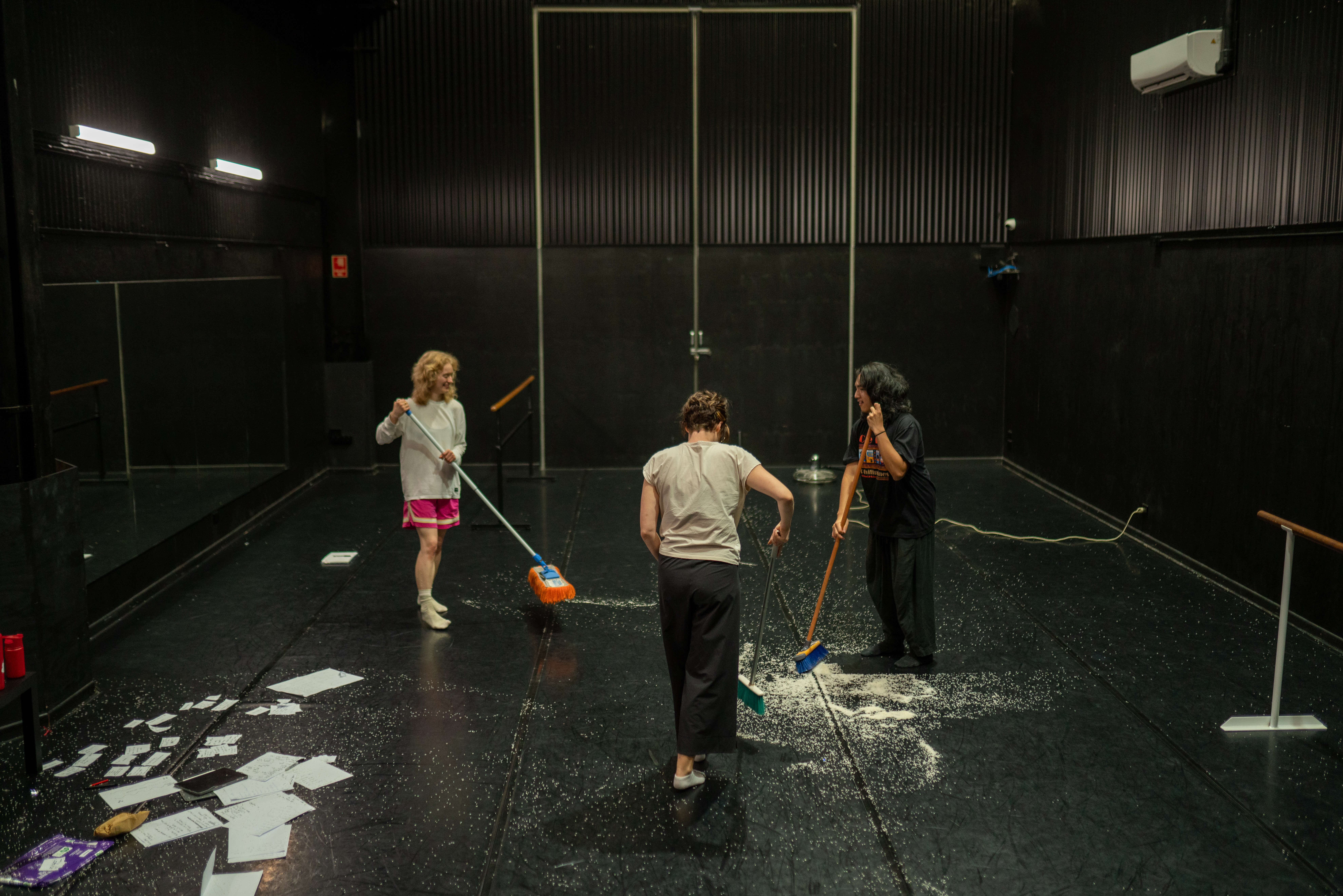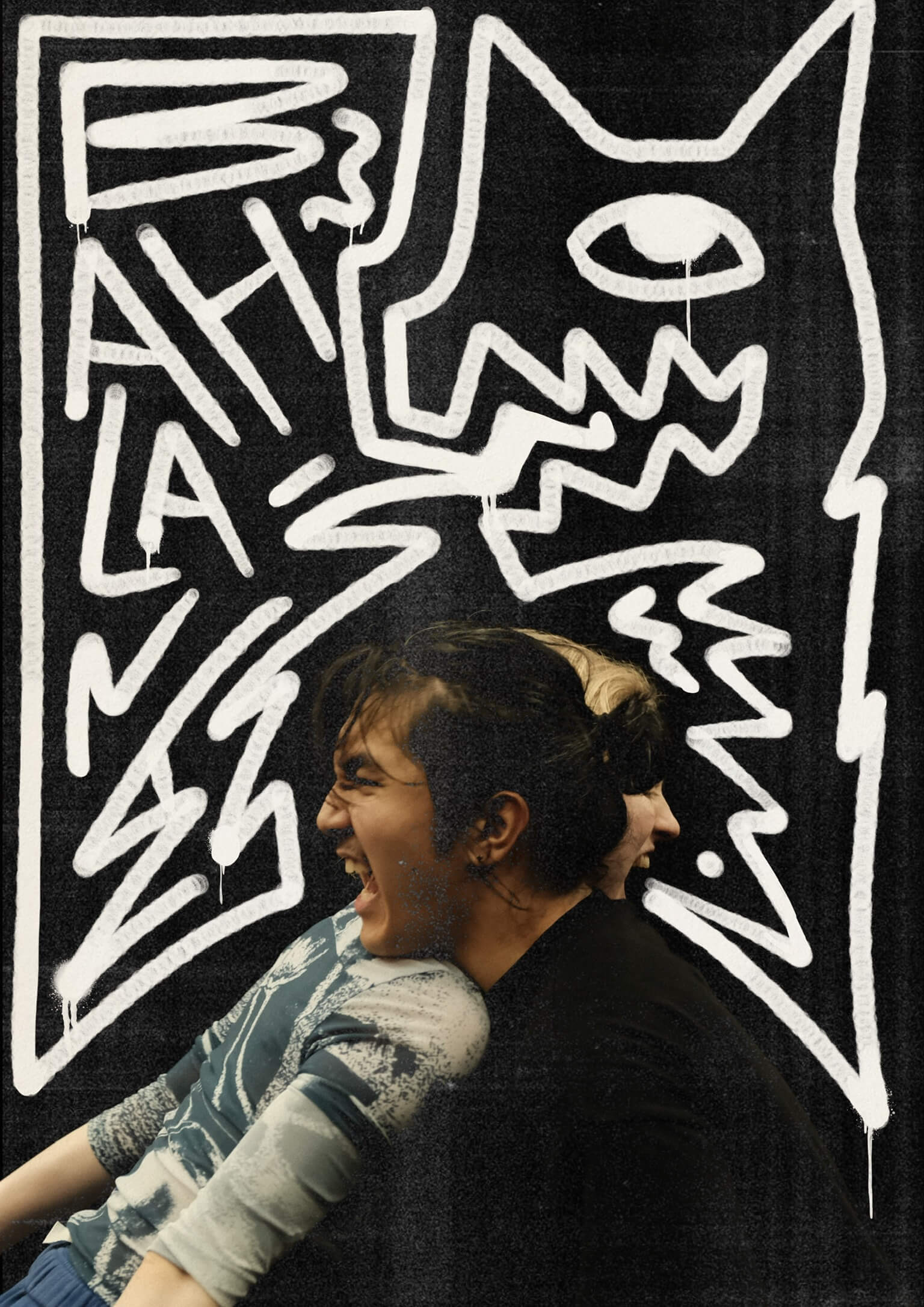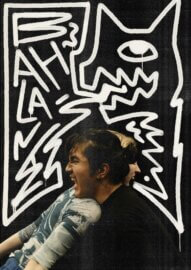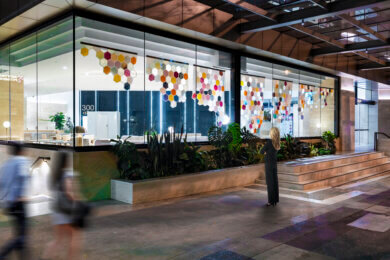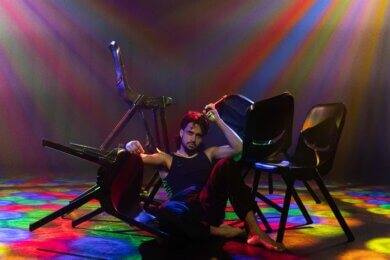My creative process always depends on the work itself; what it means, who’s involved and the context it lives in. I don’t tend to follow a strict A-to-Z plan; everything unfolds quite organically. I see creation as a kind of surrender, a dance between trust, impulse, and curiosity which feels very Bahala/o.
For example, my work Lato2x, created for AUSTI. Dance and Physical Theatre, was grounded in play and games, drawing inspiration from the Filipino toy Lato-Lato. In contrast, Bahala/o began with what I thought was a “f*ck it” attitude, but it evolved into something deeper: a reflection on trust and the identities that had shaped us. Trusting impulses, listening to the body and allowing the present moment to be shaped by both past and future selves.
The process of Bahala/o really embodied its philosophy. There was no blueprint for how it would arrive at Metro — it was pure “Bahala na,” surrendering to what comes and trusting that the pieces will find their place. It started as a simple invitation from Liesel Zink to share some early ideas, a solo with rice bags in a traverse setting. I’ve always loved working with found objects and shaping audience experience; I often think in design before choreography. Sometimes ideas appear from lived experience… and sometimes, honestly, from Pinterest (haha)
Rice became the heart of this work amd where it lives; it’s sustenance, offering, celebration, grief — life itself. I wanted to begin with my staple, something that anchors so many Asian cultures, including the Philippines. Through that, the work naturally evolved into a playground where (tradition and the self) / (current us and neglected identities) could co-exist.
Throughout development, I sought external support and collaboration, working with independent artists, hearing Filipino voices and strengthening areas I wanted to grow in, such as dialogue. Hearing other perspectives became essential; the work itself reflects different versions of self so it was key to tap into those performance modes. My director observership at La Boite also influenced this; it made me more aware of the power of a script. Out of that came what I call a “dance script,” which proved invaluable for both me and my collaborators. Explicitly naming my different roles — producer Buddy, director Buddy, friend Buddy — made rehearsals feel meta, aligning beautifully with the multiverse of self at the core of the work.
At the end of the day, I’m able to take risks and experiment with new frameworks because I’ve built a habitual foundation I can always fall back on. That safety net gives me confidence to let go, to truly embrace the ‘Bahala na’ energy: surrendering with trust, knowing there’s a base to catch me.
Image: Bahala/o Studio1 Creative Development (2024) Photo by Georgia Haupt
